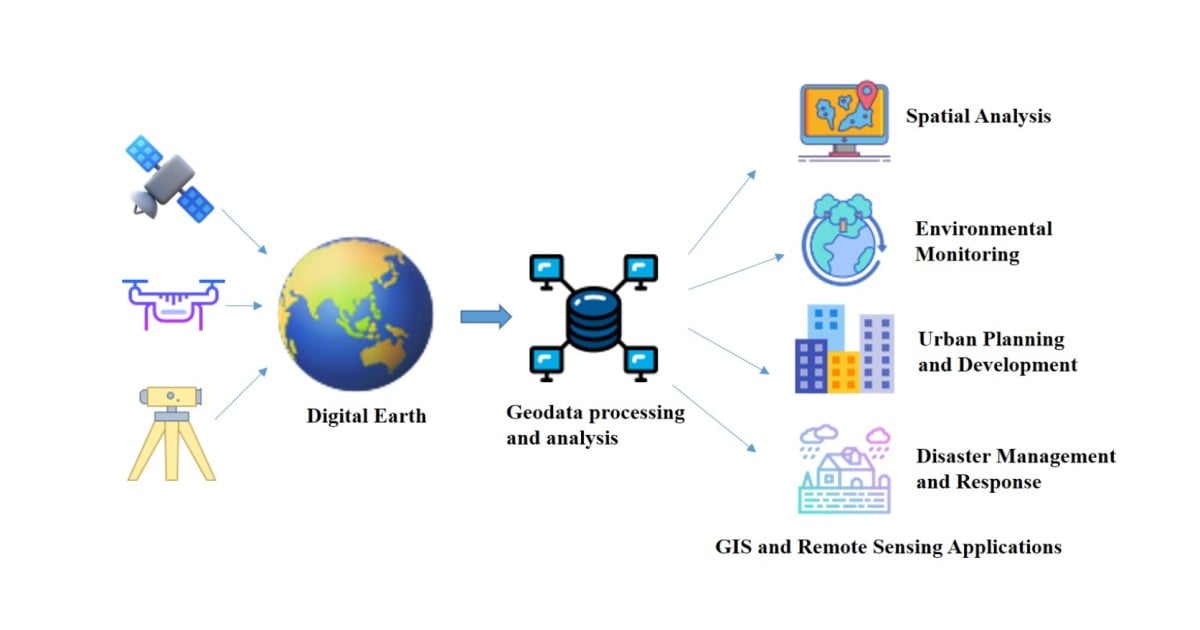Geographic Information System and Remote Sensing Applications in Digital Earth
A special issue of Applied Sciences (ISSN 2076-3417). This special issue belongs to the section "Earth Sciences".
Deadline for manuscript submissions: 20 June 2025 | Viewed by 10560

Special Issue Editors
Interests: GIS applications; remote sensing; spatial analysis; disaster management and response; big data analytics in GIS and remote sensing
Special Issue Information
Dear Colleagues,
This Special Issue aims to explore the intersection between Geographic Information Systems (GISs) and remote sensing in the realm of Digital Earth. It seeks to gather innovative research that highlights the latest advancements, challenges, and opportunities in applying GIS and remote sensing techniques to digitalize, analyze, and understand our planet. The scope encompasses various aspects of GIS and remote sensing, including data acquisition, processing, analysis, visualization, and decision-making support, with a focus on their practical applications in environmental monitoring, urban planning, disaster management, agricultural practices, and other related fields. The Special Issue welcomes contributions from both academic researchers and industry professionals, emphasizing real-world case studies and practical solutions.
This Special Issue will provide a platform for scholars and practitioners to share their insights, experiences, and best practices in leveraging GIS and remote sensing for the advancement of Digital Earth. Through this collection of articles, we aim to contribute to the growing body of knowledge in this exciting and dynamic field.
Dr. Zhaojin Yan
Dr. Xiao Zhou
Guest Editors
Manuscript Submission Information
Manuscripts should be submitted online at www.mdpi.com by registering and logging in to this website. Once you are registered, click here to go to the submission form. Manuscripts can be submitted until the deadline. All submissions that pass pre-check are peer-reviewed. Accepted papers will be published continuously in the journal (as soon as accepted) and will be listed together on the special issue website. Research articles, review articles as well as short communications are invited. For planned papers, a title and short abstract (about 100 words) can be sent to the Editorial Office for announcement on this website.
Submitted manuscripts should not have been published previously, nor be under consideration for publication elsewhere (except conference proceedings papers). All manuscripts are thoroughly refereed through a single-blind peer-review process. A guide for authors and other relevant information for submission of manuscripts is available on the Instructions for Authors page. Applied Sciences is an international peer-reviewed open access semimonthly journal published by MDPI.
Please visit the Instructions for Authors page before submitting a manuscript. The Article Processing Charge (APC) for publication in this open access journal is 2400 CHF (Swiss Francs). Submitted papers should be well formatted and use good English. Authors may use MDPI's English editing service prior to publication or during author revisions.
Keywords
- GIS applications
- remote sensing
- digital earth
- spatial analysis
- environmental monitoring
- urban planning and development
- disaster management and response
- big data analytics in GIS and remote sensing
Benefits of Publishing in a Special Issue
- Ease of navigation: Grouping papers by topic helps scholars navigate broad scope journals more efficiently.
- Greater discoverability: Special Issues support the reach and impact of scientific research. Articles in Special Issues are more discoverable and cited more frequently.
- Expansion of research network: Special Issues facilitate connections among authors, fostering scientific collaborations.
- External promotion: Articles in Special Issues are often promoted through the journal's social media, increasing their visibility.
- e-Book format: Special Issues with more than 10 articles can be published as dedicated e-books, ensuring wide and rapid dissemination.
Further information on MDPI's Special Issue policies can be found here.






